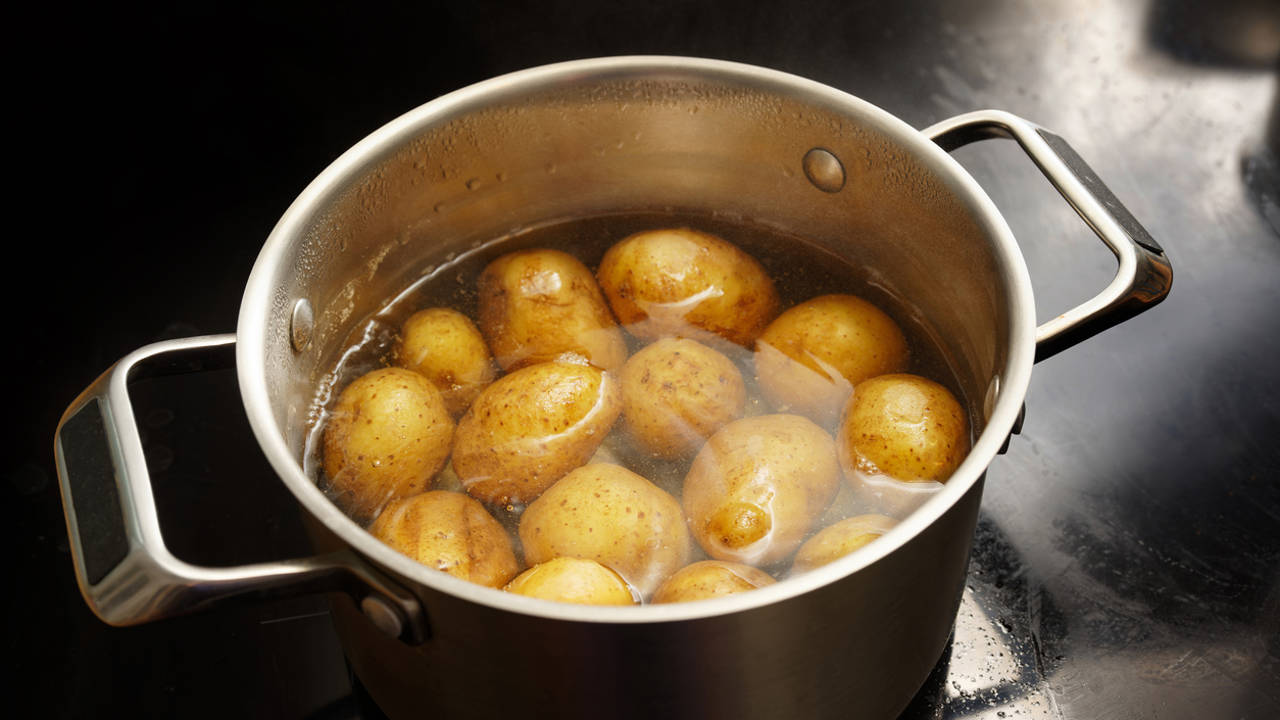Some say that you have to peel the potatoes, others advise against it. We explain what is really true and show you a trick that will help you peel potatoes in an instant.

Potatoes are one of the most versatile foods and are used in countless dishes around the world. But there is a question that many people ask when preparing the healthy tuber: should I peel the potatoes or can I eat them with skin?
This decision depends on several factors: your personal preferences, the demands of the dish, but also health aspects.
POTATOES WITH OR WITHOUT SKIN? IT’S A MATTER OF TASTE
Peeling potatoes depends, on the one hand, on your personal preferences, the desired flavor and the preferred texture for a given dish.
Peeled potatoes usually have a milder texture and taste. This makes them ideal for dishes such as mashed potatoes or potato salad, where a uniform consistency is desired where the skin would be a hindrance.
The skin can influence the taste a little, as it provides a slightly earthy note. If you like that “rustic” taste, you can leave the skin to the potatoes.
The type of dish you’re cooking also influences whether it’s better to peel the potatoes or not. Whether you want to make crispy chips or baked potatoes, the skin provides a crispy surface. The skin does not usually play such an important role in soups or stews.
NUTRIENTS IN POTATO SKIN
In addition to taste preferences and specific dish considerations, you should also consider health aspects when deciding whether to peel potatoes.
An especially large amount of minerals, vitamins, and phytochemicals are found directly on or immediately under the skin. Potato peel has the following health benefits:
- The highest fiber content in potatoes is found in the skin, which makes up between one and two percent of the potato. The skin contains approximately 52 percent fiber, mostly insoluble, which increases the volume of the food bolus and promotes intestinal transit.
- Potato skins are rich in resistant starch, which can improve bowel activity and cause blood sugar levels to slowly rise after eating.
- Potatoes contain many vitamins B and C. However, some of these water-soluble vitamins are lost during cooking. The potato peel acts as a barrier when cooking: if you cook potatoes with the peel, less flavor and nutrients are released into the water. This means that more valuable substances remain in the potato.
TOXINS IN POTATO SKIN
However, potato peel contains not only nutrients and fiber, but also toxic glycoalkaloids: solanine and chaconine.
These toxins are found naturally in potatoes. They are mainly concentrated in the shell and shoots. Inside the potato there are far fewer toxins.
Glycoalkaloids are thermostable but soluble in water. This means that high temperatures do not affect toxins. However, if you cook potatoes in boiling water, some substances will be removed from the peel. That’s why you shouldn’t use cooking water for cooking.
Most modern potato varieties do not usually contain harmful levels of solanine, typically between 1.8 and 9.4 mg per 100 g of fresh weight. The maximum limit for solanine content in commercially sold potatoes is 200 mg per kilogram of fresh weight.
The actual content of these substances is also influenced by several factors:
- There are more toxins in green potatoes and intense germination than in new potatoes.
- Damage (e.g., during transport) and light promote the formation of toxins.
- If potatoes are stored too hot or too cold, more toxins are formed.
TO PEEL POTATOES OR NOT?
Although the skin contains a significant amount of glycoalkaloids, it is not necessary to peel the potatoes, as long as they are fresh, in good condition and stored correctly.
If potatoes are going to be consumed by small children, it is advisable to peel them as a precautionary measure. To reduce the loss of nutrients when cooking, you can first prepare potatoes with skin and then peel them.
Green spots are an indication of an increased amount of toxins. Generously trim green areas. You should completely discard very green potatoes.
PEEL POTATOES EASILY
You can easily peel potatoes with the following instructions:
- Clean the potatoes and cut the skin on all sides with a sharp knife.
- Cook the potatoes until tender. Make sure the potatoes are not too soft, otherwise they could crumble when peeled.
- Place the cooked potatoes in ice water and let them cool there for at least ten seconds.
- Then you can simply peel the peel with your fingers or a knife with ease.
With this method you can peel potatoes very easily. However, it is not magic and the skin will not always come off “in one go”. If the potato is a little deformed or has small “spots”, you will have to trim in some places.








